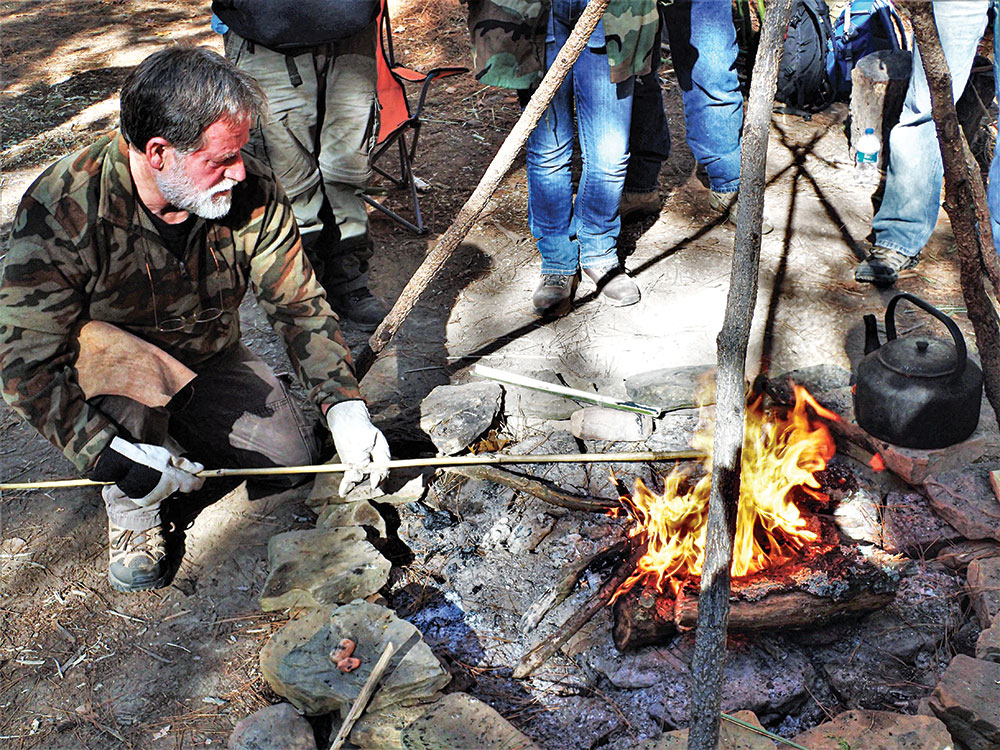Randall’s Adventure & Training offers hardcore lessons for ultimate challenges.
Randall’s Adventure & Training (RAT) has led countless expeditions and training courses across the United States. From military and law enforcement specialty teams to film crews supporting reality TV shows, RAT has trained the best of them. However, it all started in the Amazon jungles of Peru in 1997—the largest rain forest in the world—leading extended trips full of mystery and adventure.
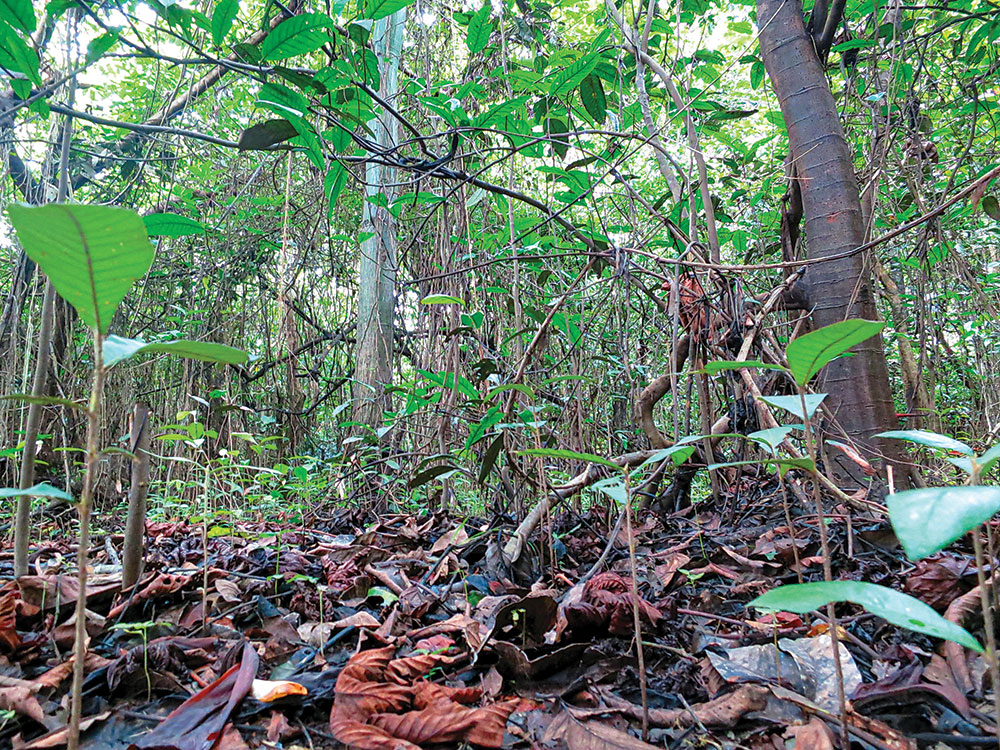
RAT has since evolved into one of the top outdoor training schools in the United States. Its team is always testing new gear and techniques for the extremes of modern-day adventure. Randall’s Adventure and Training and ESEE Knives are owned by Jeff Randall and Mike Perrin under the parent corporation TransEquatorial Solutions, Inc.
RAT classes focus on wilderness survival, land navigation, bushcraft, firearms, wilderness first aid, tracking, recreational ropework and lightweight technical rescue, because these disciplines are their specialties.
RAT COURSES
The RAT website is easy to navigate. The training page clearly displays upcoming and future classes in chronological order, listing dates and prices. Selecting a class will give you one or more photos and often a video to help get a feel for the class. The date and price are at the top, and some classes have a drop-down feature listing future class dates, especially for regularly occurring classes.
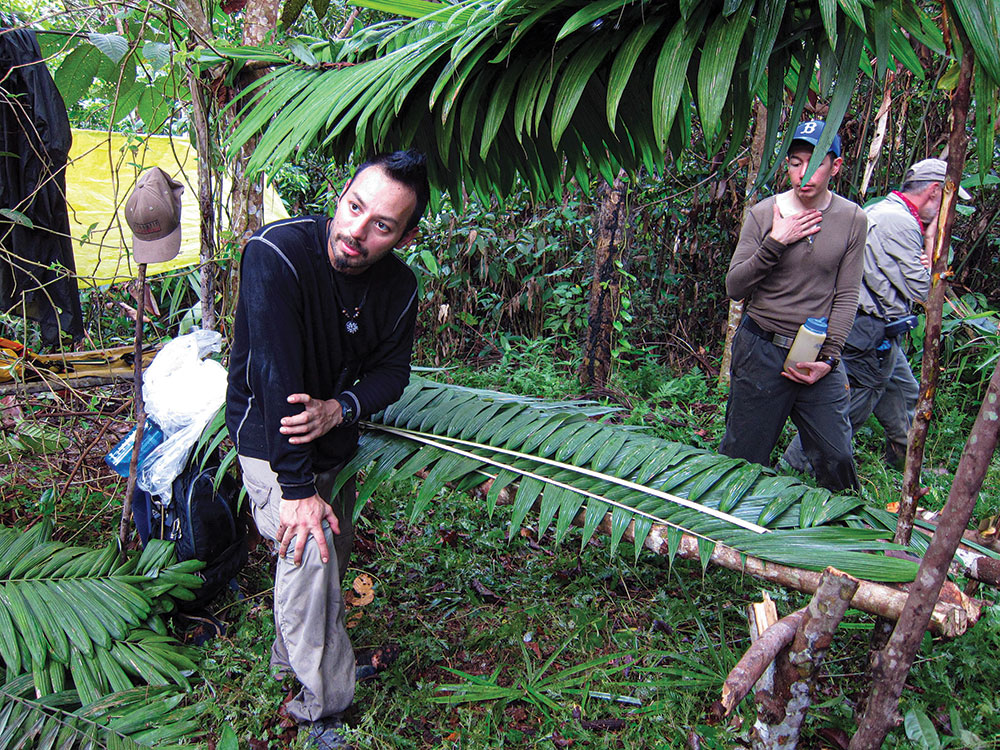
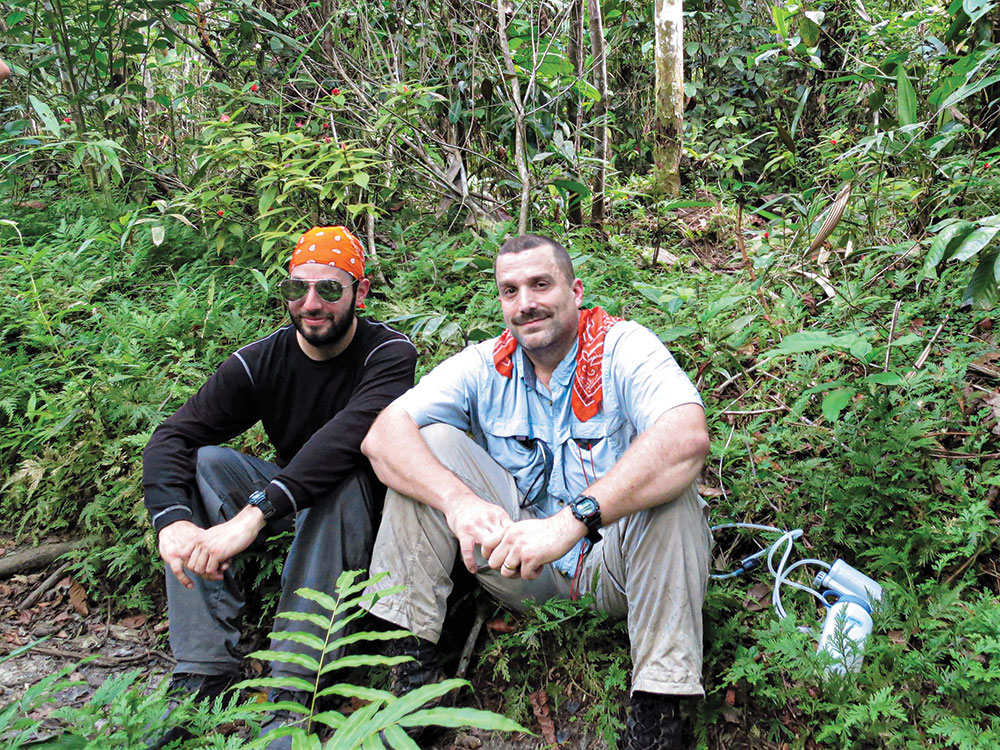
Under the description, there will be release forms needed (if any) and a location with links. Following that will be a brief class description, gear list and contact information, with an email link to contact Patrick Rollins. Some classes offer a free class knife and certificate of completion. While most classes offer a certificate, not all offer a knife (but that information is under each class listing). Every class listing has a link for frequently asked questions (“FAQs”)—which everyone should read.
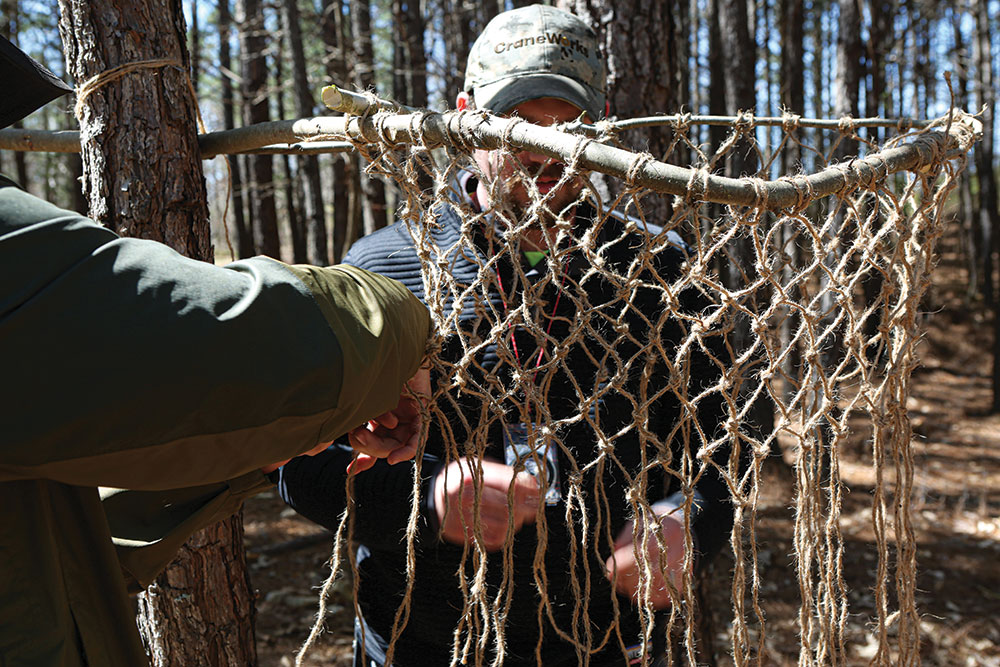
All the RAT classes have something to offer, but two are standout classes in my opinion: Field Survival (which can be compared to the Jungle Survival class) and Advanced Bushcraft.
FIELD SURVIVAL
For years, I’ve heard owners Mike Perrin and Jeff Randall say they should advertise their jungle survival class as a “sleep deprivation and weight loss program.” I think they finally have one in the form of Field Survival (stateside).
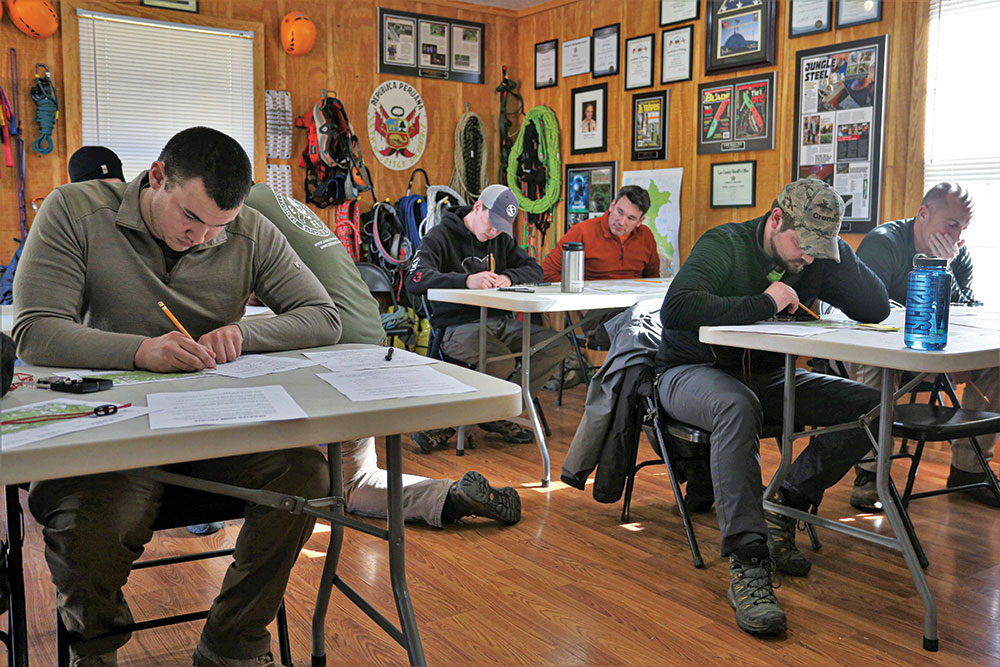
Every Field Survival class is a little different, and every good survival program gets tweaked until it’s appropriate. Naturally, things evolve, and new ideas are tried out; older ones are removed. I’ve been on hand, assisting in about four of these classes, and this is a tough one—not only for students, but for everyone involved.
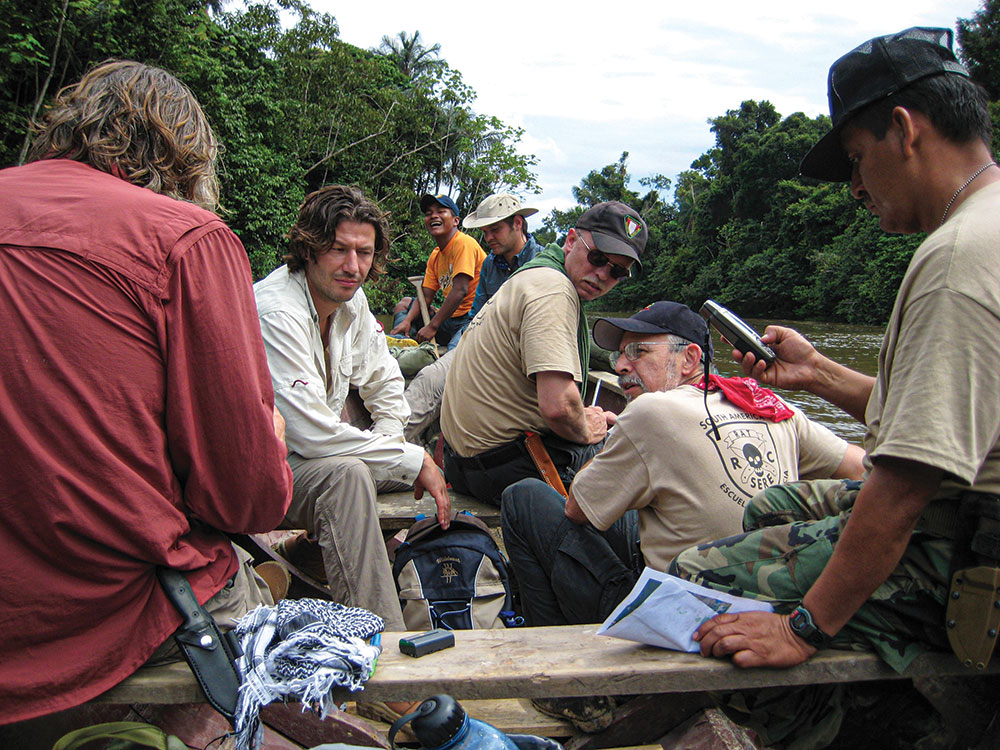
The three-day Field Survival class is designed to simulate a 72-hour survival scenario. Students experience hunger, sleep deprivation, exposure to the elements and the general discomfort usually associated with a survival scenario. Over the three days, they learn the basic survival and navigational skills needed to self-rescue or survive until rescue arrives. They must also learn to work together as a group to overcome mental and physical challenges—sometimes, even injuries.
“RAT has … evolved into one of the top outdoor training schools in the United States. Its team is always testing new gear and techniques for the extremes of modern-day adventure.”
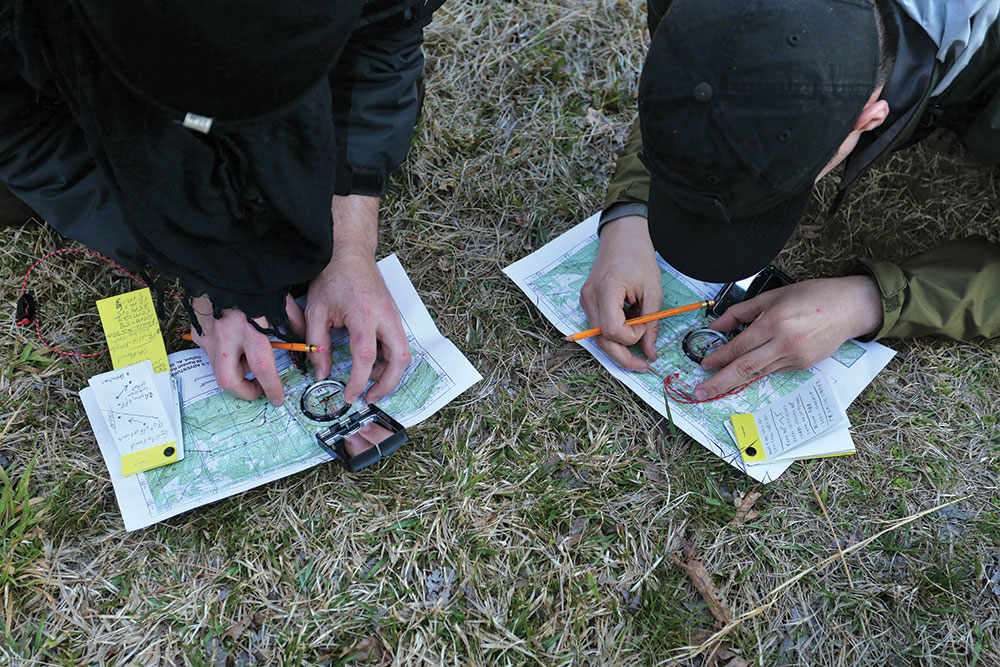
The students all get issued an egg to take care of and guard during the first part of the class. If that egg gets broken, they have to pay for it with some creative lesson.
PowerPoint and navigation training are done in a classroom setting. Without any snack break, the students have to muscle through to the next activities. A navigation course is next, getting a feel for maps and compasses before heading over to the shelter, knife and fire skills camp that’s loosely called “Bum Camp.”
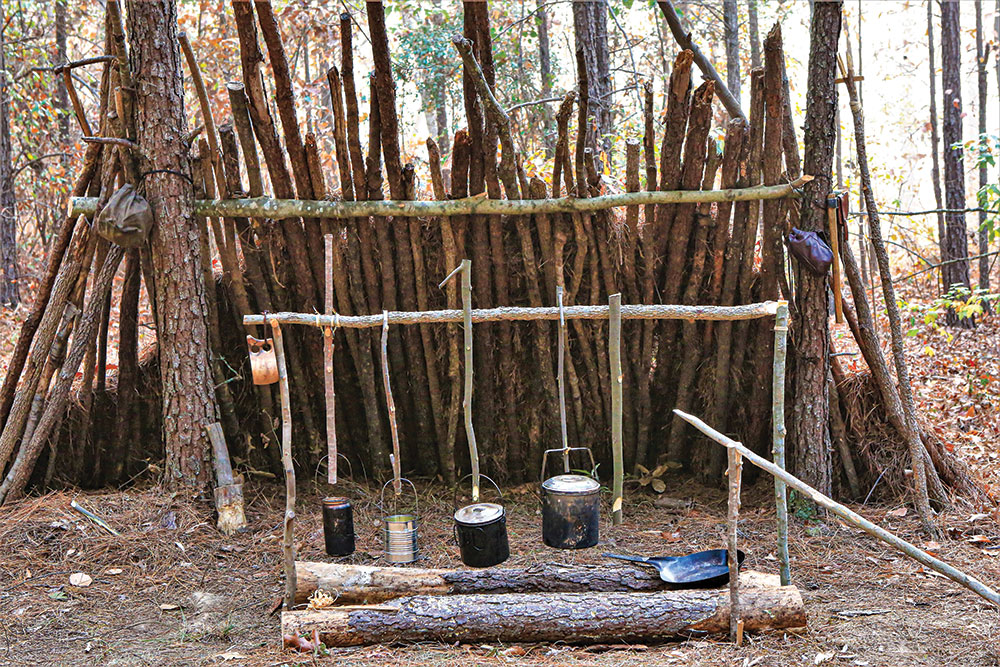
Remember: The basics always come back to us. Therefore, the basics are the most important part of skills associated with survival.
Basics are taught in regard to knife safety and proper use. Shelter selection and construction of materials, fire-building techniques, primitive spears and traps are all addressed. Down-and-dirty, bare-bones survival skills will get a person through just about any situation.
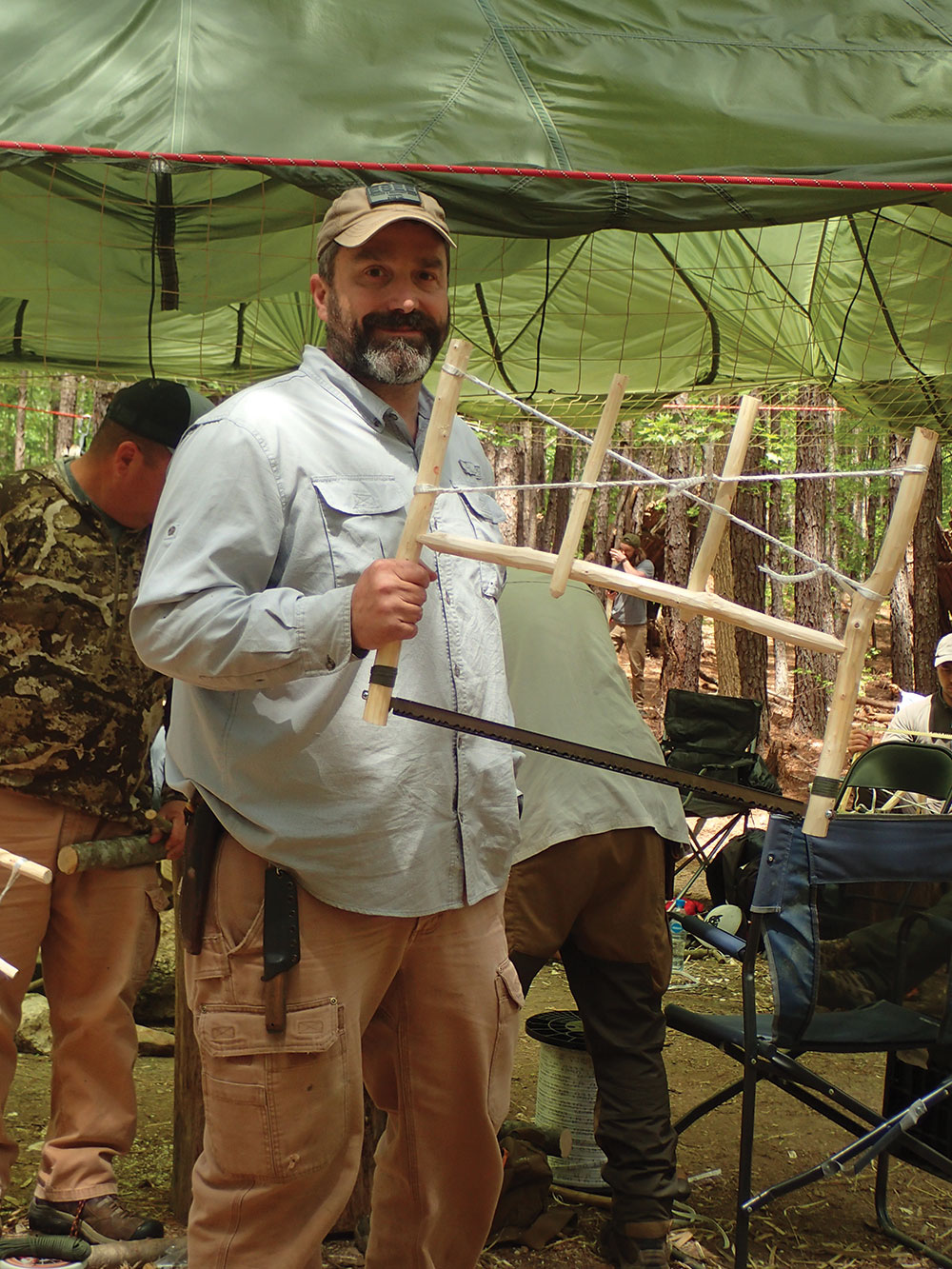
The Star Navigation class is usually next. It’s been known to take some groups more than 10 hours to complete. It’s designed to send three groups around the training property, rotating leaders and pace-counters so everybody gets a feel for each job.
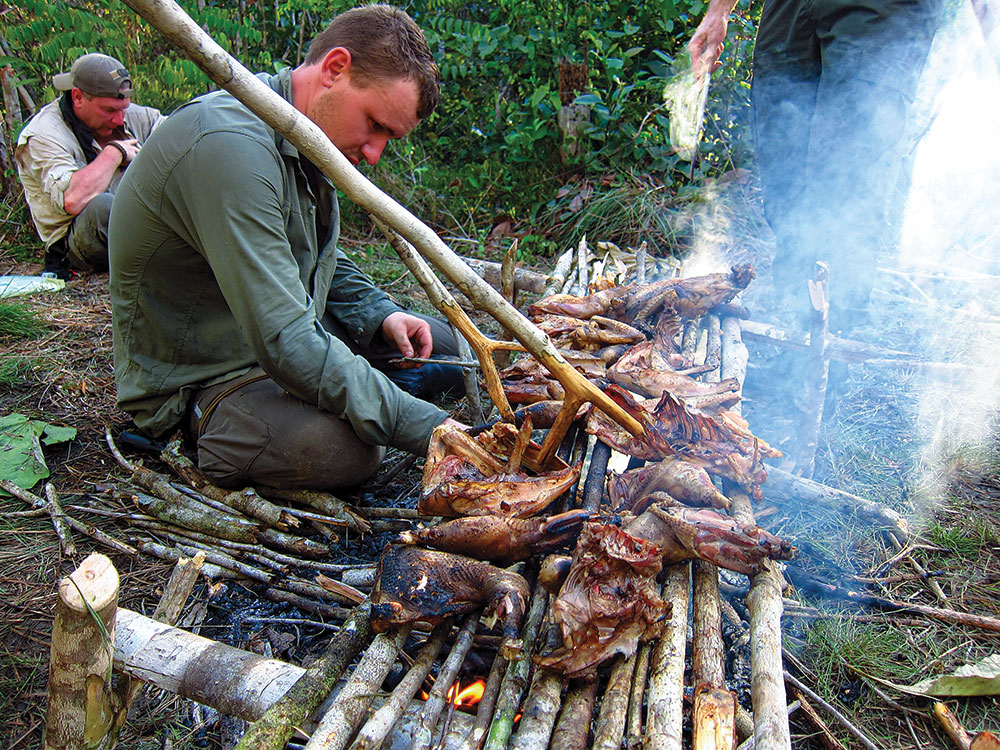
Once the teams are ready, they’re given 5-gallon water jugs to carry as their water source. Students then have to be creative in figuring out a way to succeed using their tools, wood from the forest and their brains.
Then, they’re given coordinates to the location at which they need to set up a camp and make a shelter and fire. Classroom training and skills instruction linger well into the night. During this, students usually see the sun go down … and soon come up. This is the end of day one; but it’s just the beginning of more physically punishing activities and skills—all in the name of survival.
“RAT classes focus on wilderness survival, land navigation, bushcraft, firearms, wilderness first aid, tracking, recreational ropework and lightweight technical rescue, because these disciplines are their specialties.”
At any given hour, the students have a new activity to help them wake up. They’re given coordinates to an area in the woods that have materials to be collected on the way to a 55-gallon metal drum full of water. They have to construct a way (from two metal poles, rope and a tire) to transport the water back to the classroom. This is always hard to watch, and it’s a tedious process, to say the least. It’ll only work if the students act as a team and use their most important tools: their brains.
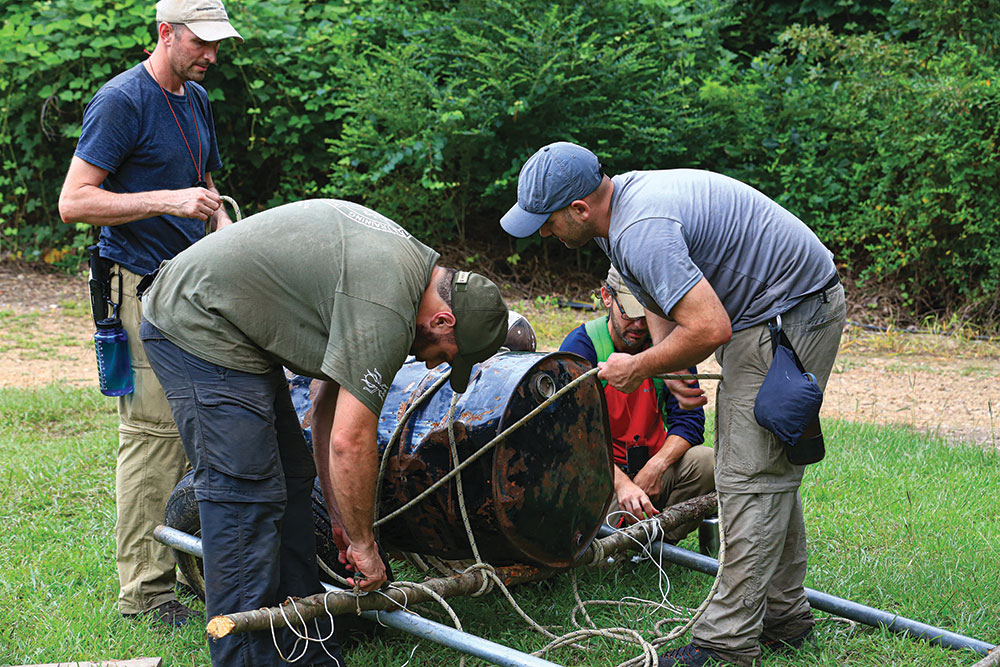
Usually, the remainder of the day is spent on more basic camp skills and preparing live animals, which is the only food provided during the class. Students are given a quick sewing lesson on how to make a lockstitch—as a precursor before being stripped of their shoes. Then, they get issued some canvas, foam, cordage and a needle. They then have to finish the class with the shoes they make.
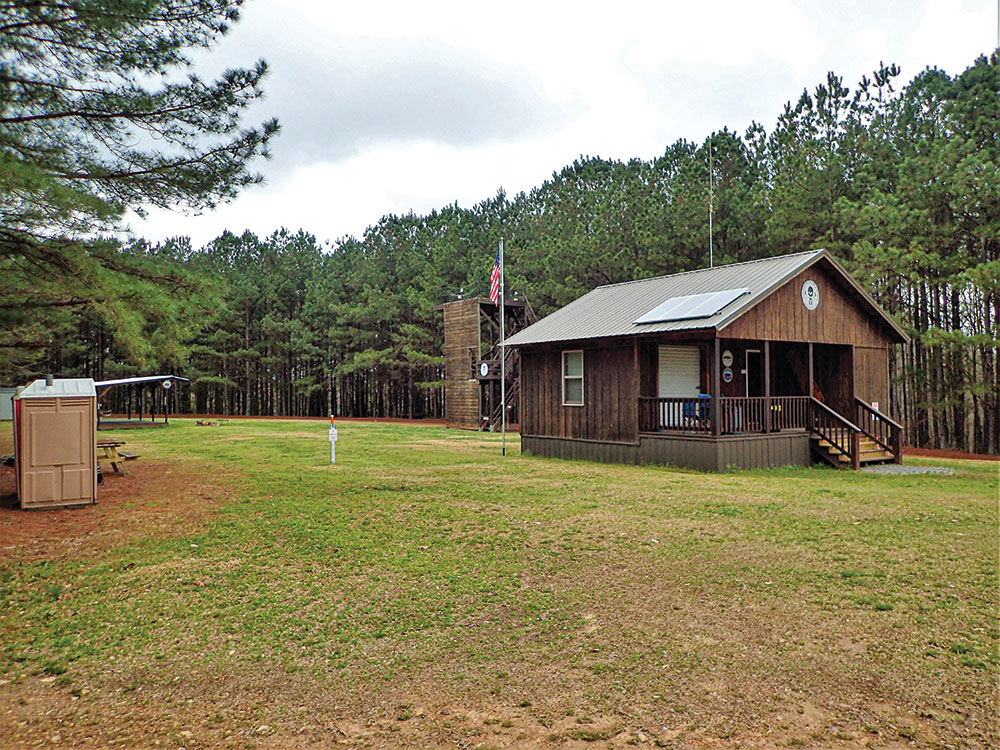
As exhaustion sets in, students are given new coordinates for the new camp they have to build from scratch. Gear is stripped, and a pack is provided for the entire group to share. Somewhere around 2:00 a.m., it’s time to wake the students and send them on yet another mission. They’re provided with a scenario of a downed airplane in a pond—in which they, themselves, are survivors but have one injured member. They have to make fire and float it across the pond, along with the injured member, who can’t be allowed to fall into the water. This takes team leadership skills to accomplish.
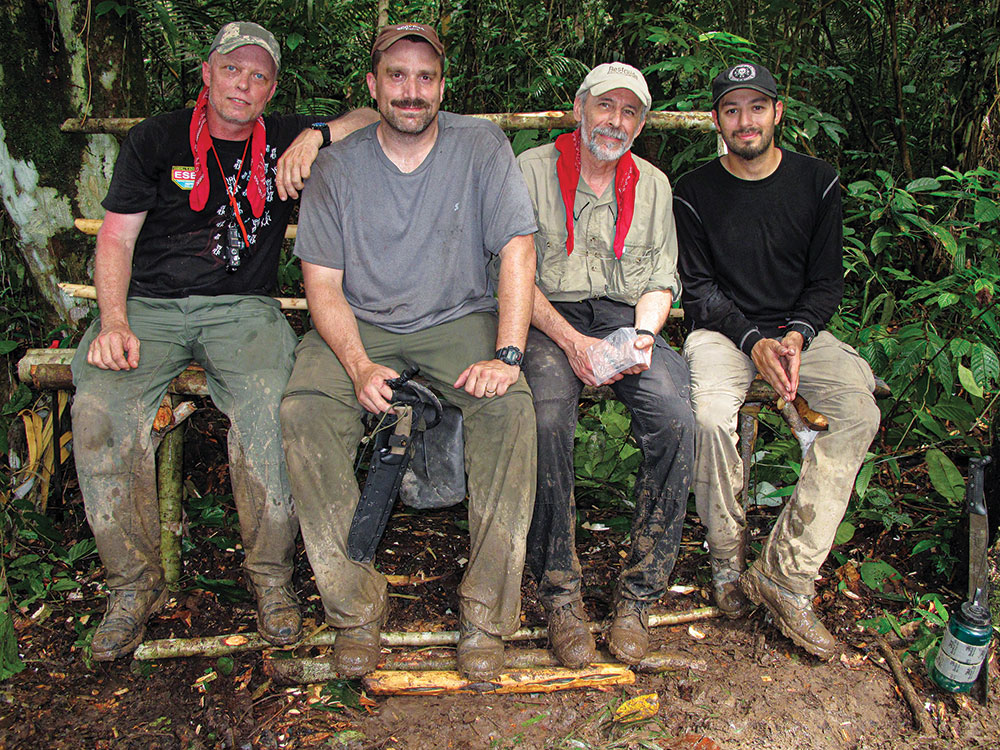
The last big activity is building a bridge across a pond using supplied materials. Students have to get themselves across the bridge without it coming apart or them falling in the water. A quick sprint through the pond is also required as a timed race.
Standing in the mud, comparing leaches, is what it’s all about as the class comes to an end. This is extreme survival training at its best.
ADVANCED BUSHCRAFT
The Advanced Bushcraft class brings in James Gibson, who’s no stranger to the outdoors world. His handmade knives and designs can be seen on various sites. He’s the co-host of the Clinch River Knap-in and has been a flintknapper for more than 20 years. He’s also one of the best natural knifemakers I know.
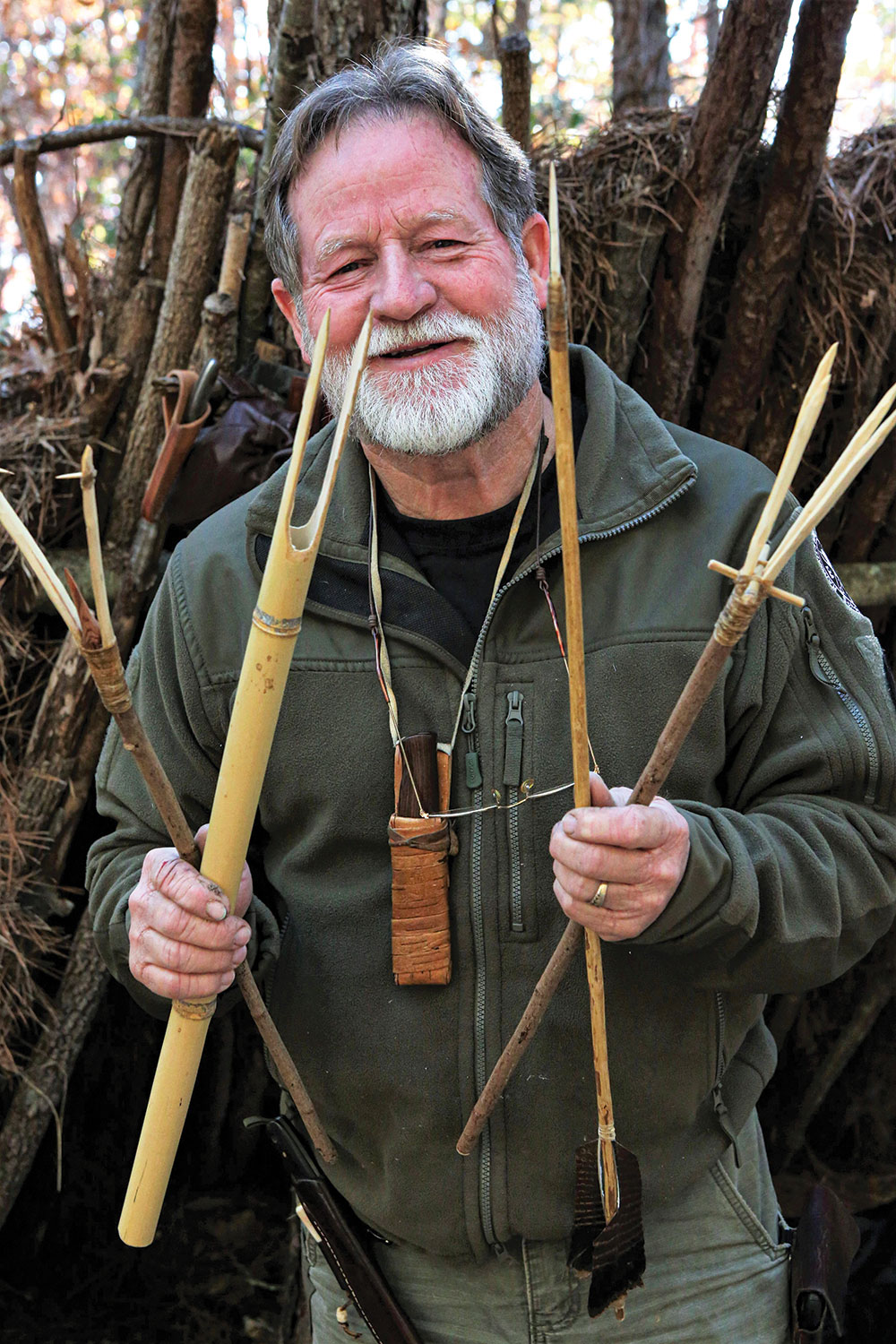
He obtained his journeymen smith rating with the American Bladesmith Society in 2003. He uses his tools in the bush, so he has a better understanding of what works. His skills as a knifemaker, flintknapper, primitive skills enthusiast and outdoorsman all add to his skills as an instructor.
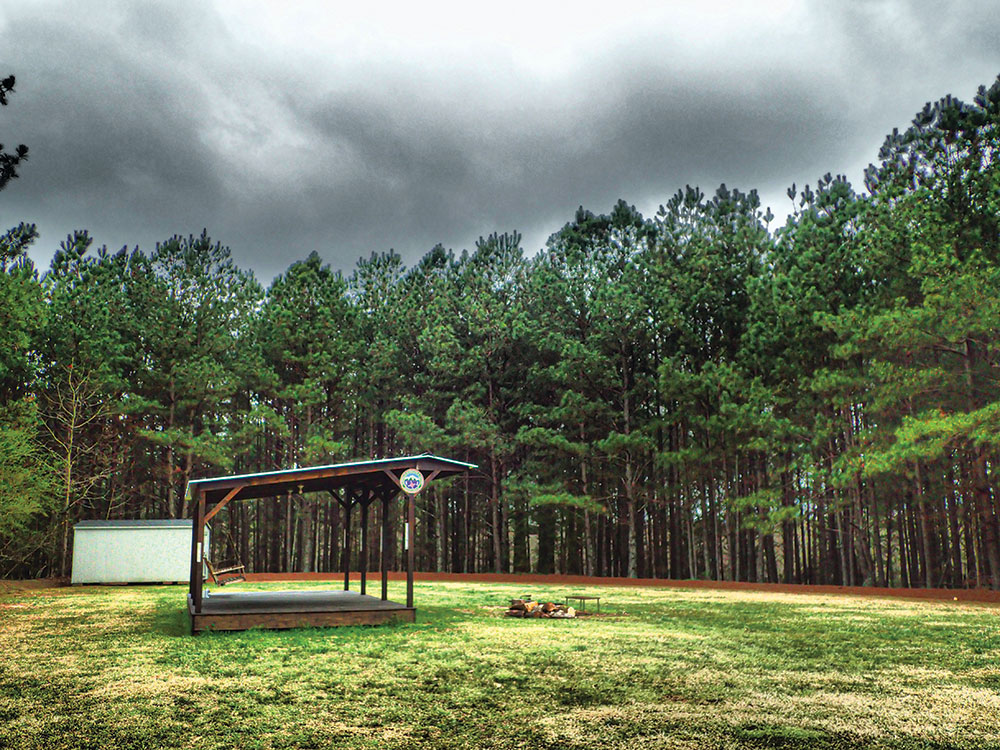
Gibson and lead RAT instructor Patrick Rollins head this class and keep it fresh, changing it up as needed. After making their way up north to take a class with the late, great Mors Kochanski and Kelly Harlton (lead instructor with Karamat Wilderness Ways in Alberta, Canada), they’ve changed up the program a bit.
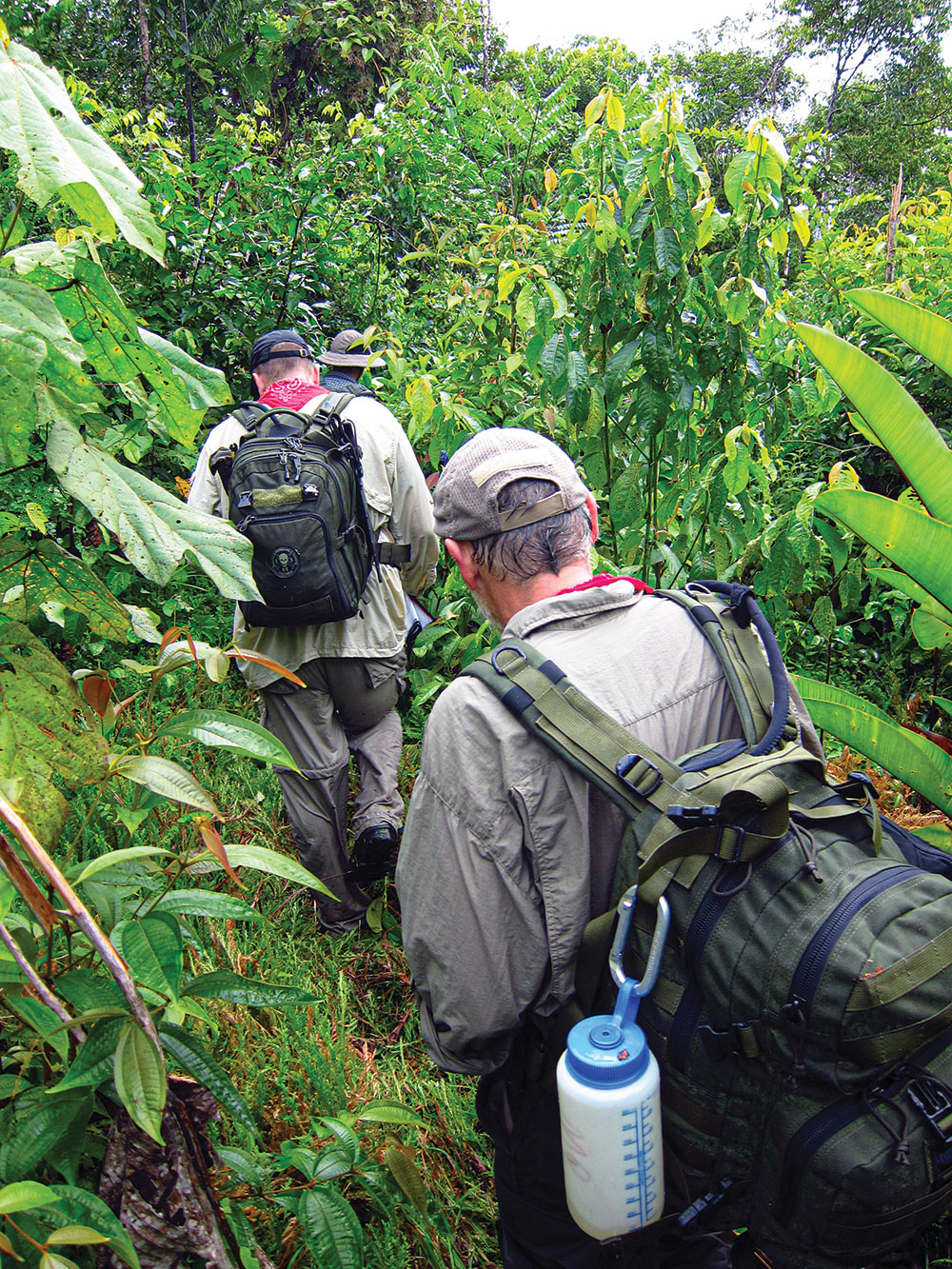
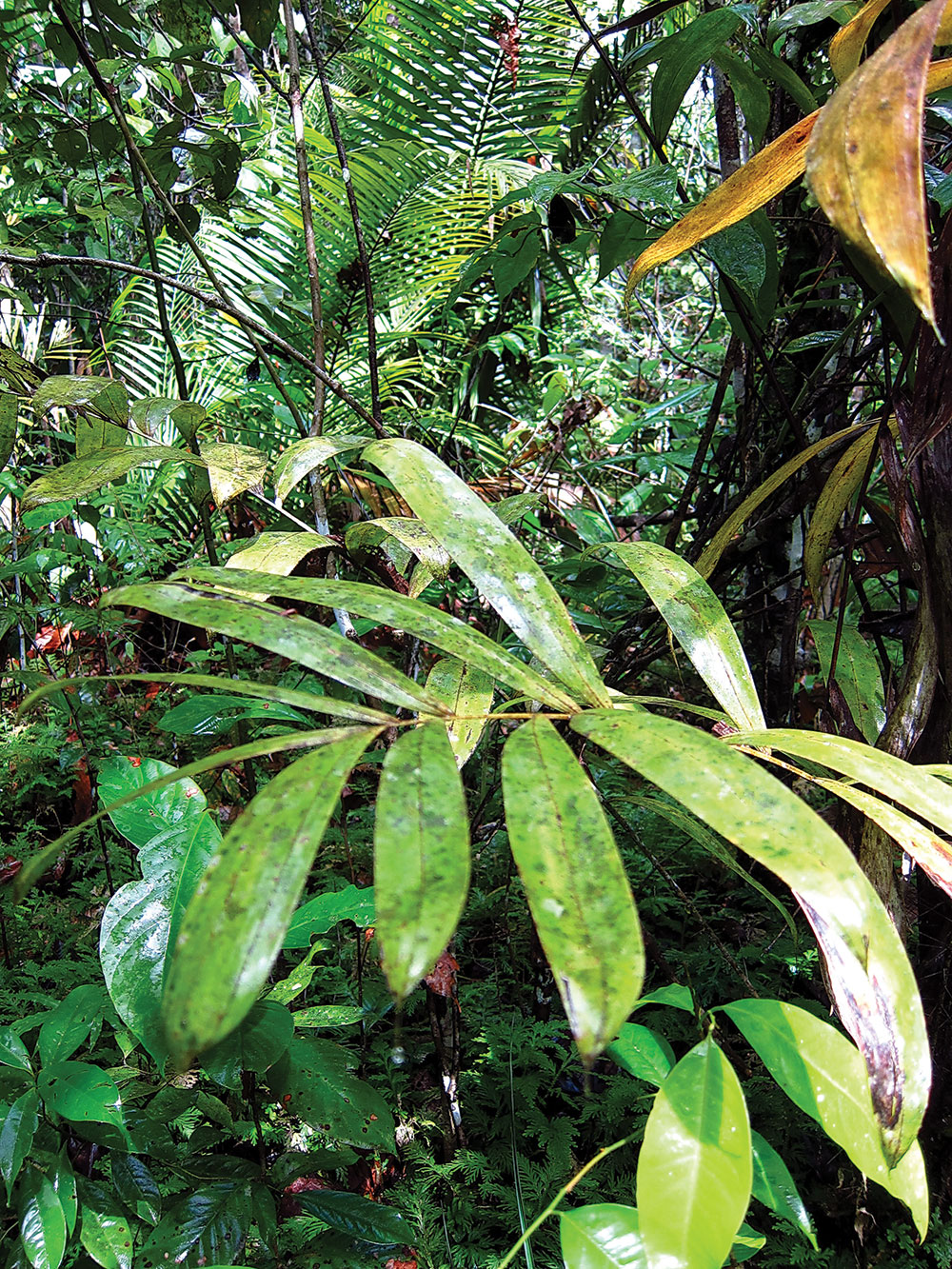
I’ve been present for about four Advanced Bushcraft classes and have seen how this course has evolved over the years. A student enrolled in this class should expect to be taught myriad skills—with less survival urgency than the more-survival-based classes. Many of the same skills are taught but are applied differently.
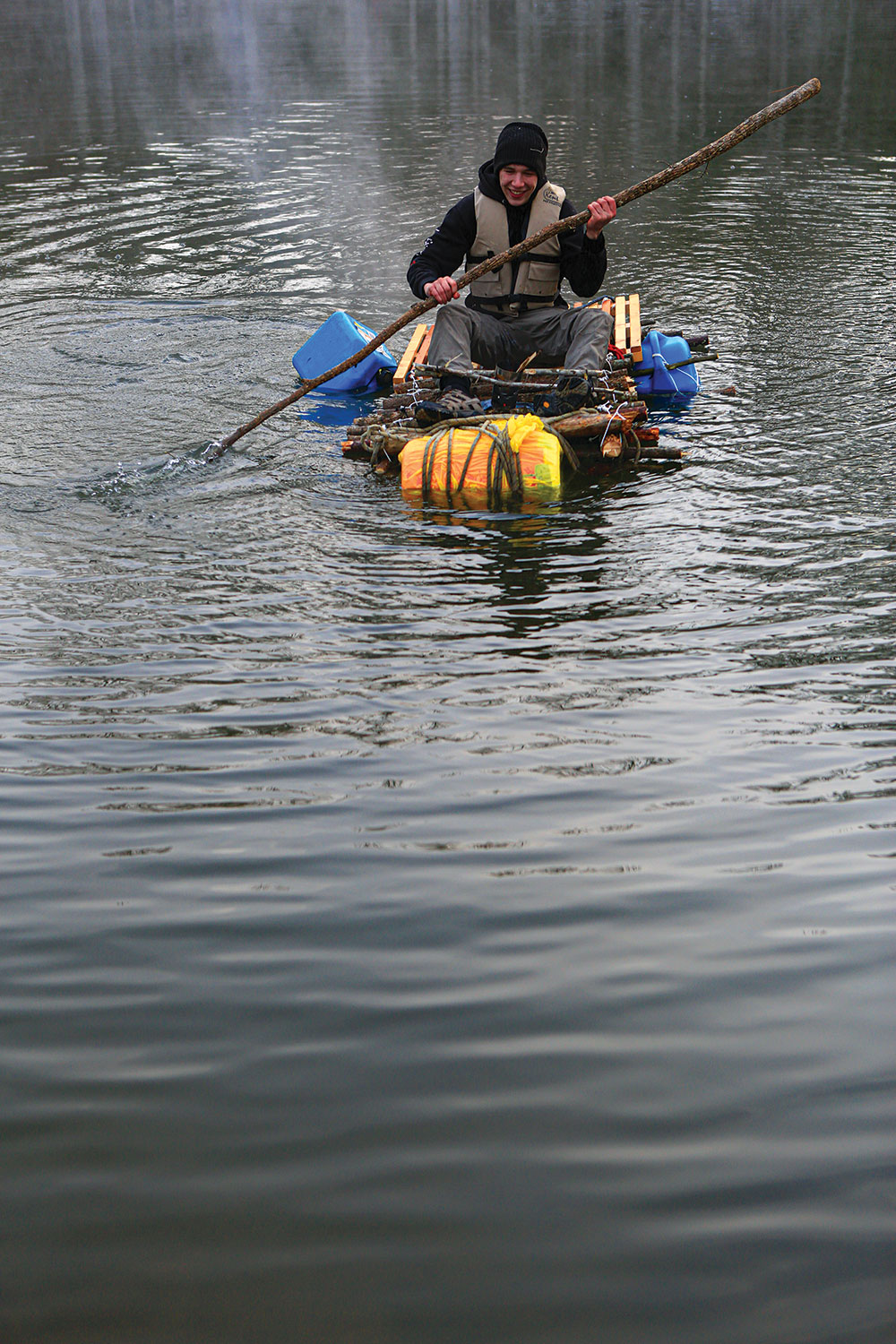
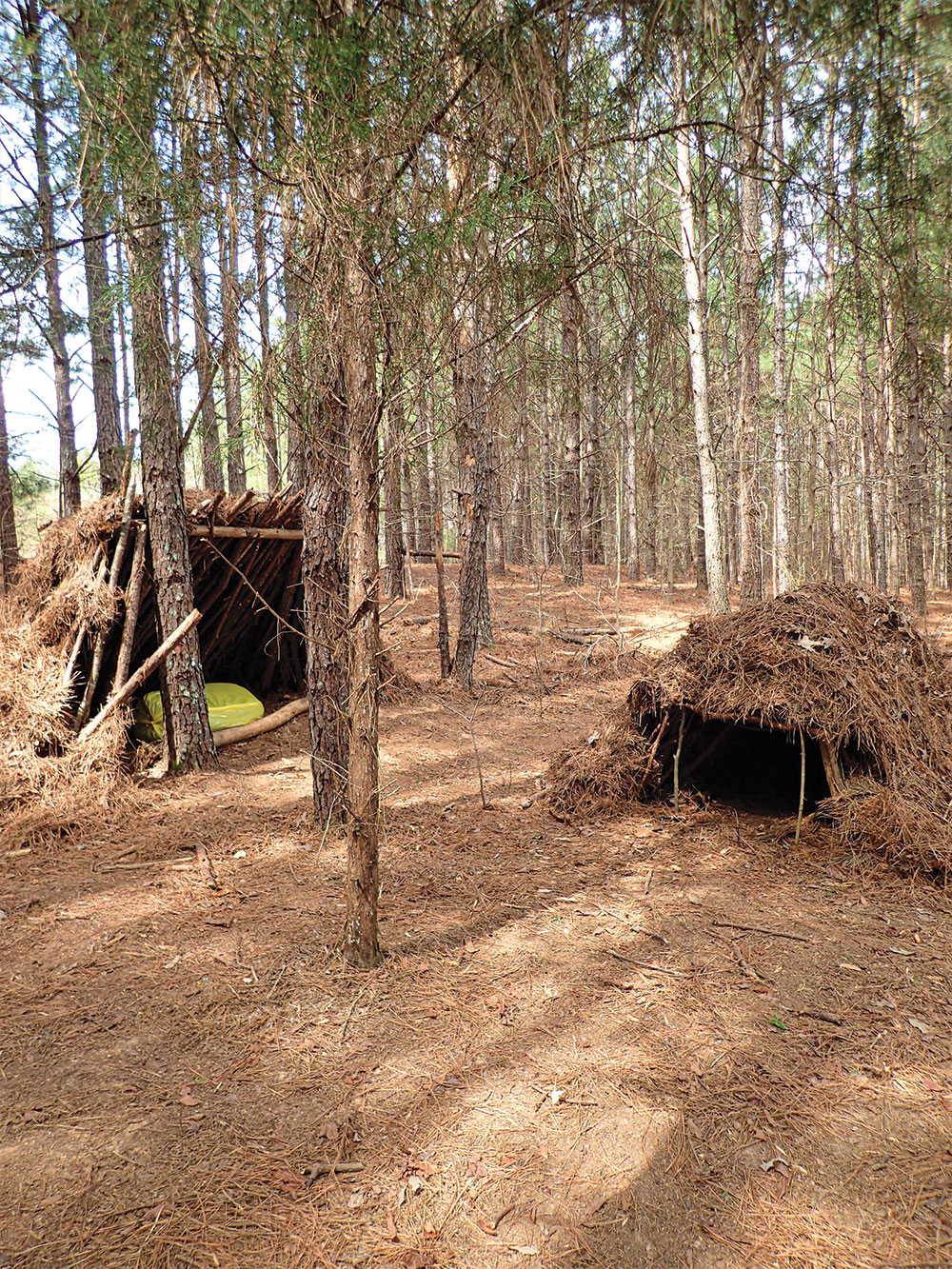
This class usually starts with knife safety and use, because a knife will be the primary tool used throughout the class. Making a bucksaw—a tool that’s used to make other tools and camp implements—is usually taught next. Knife skills are employed to make the bucksaw, which will cut pieces of wood for a pack frame, trap parts and shelter poles.
“Randall’s Adventure & Training (RAT) has led countless expeditions and training courses across the United States. From military and law enforcement specialty teams to film crews supporting reality TV shows, RAT has trained the best of them.”
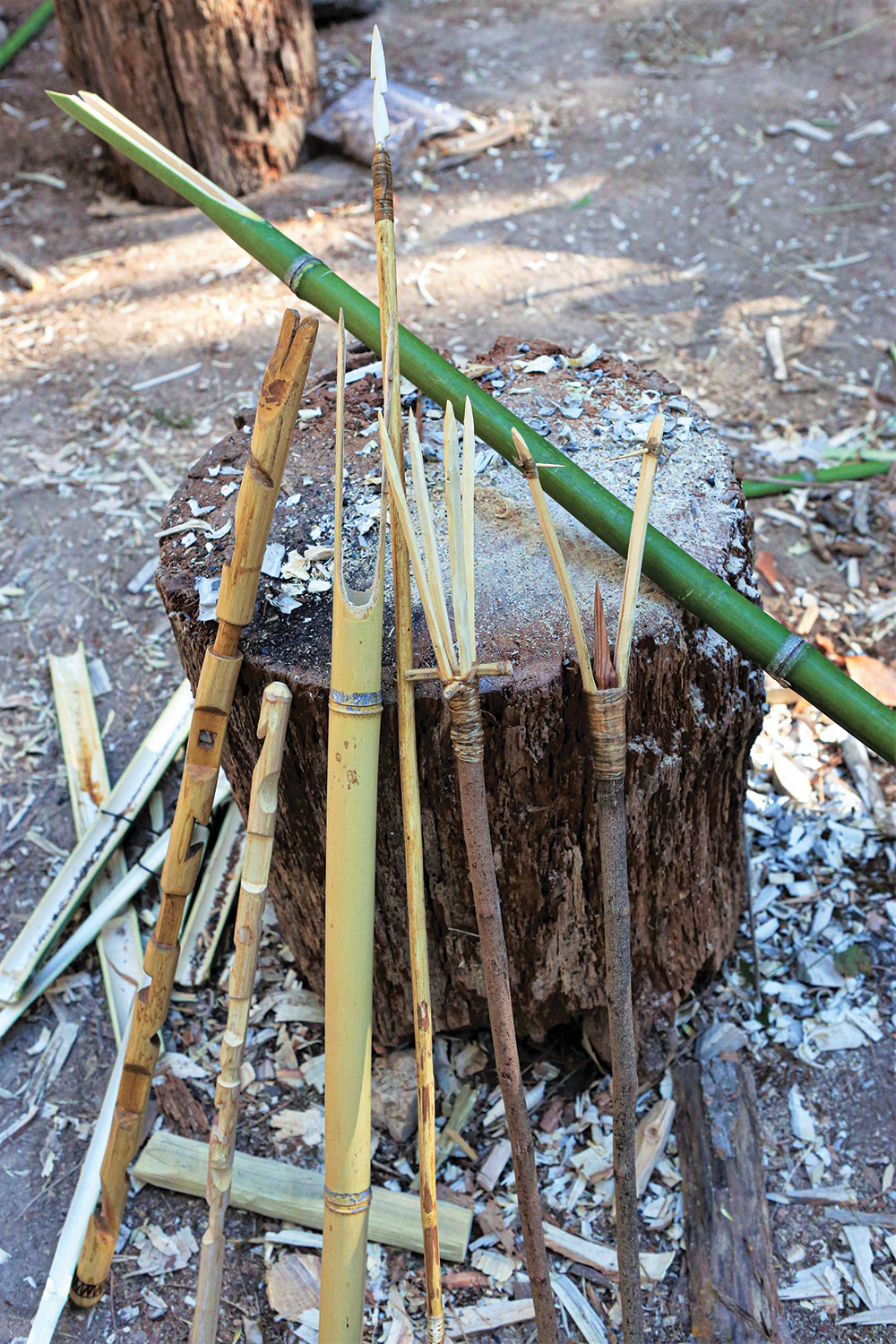
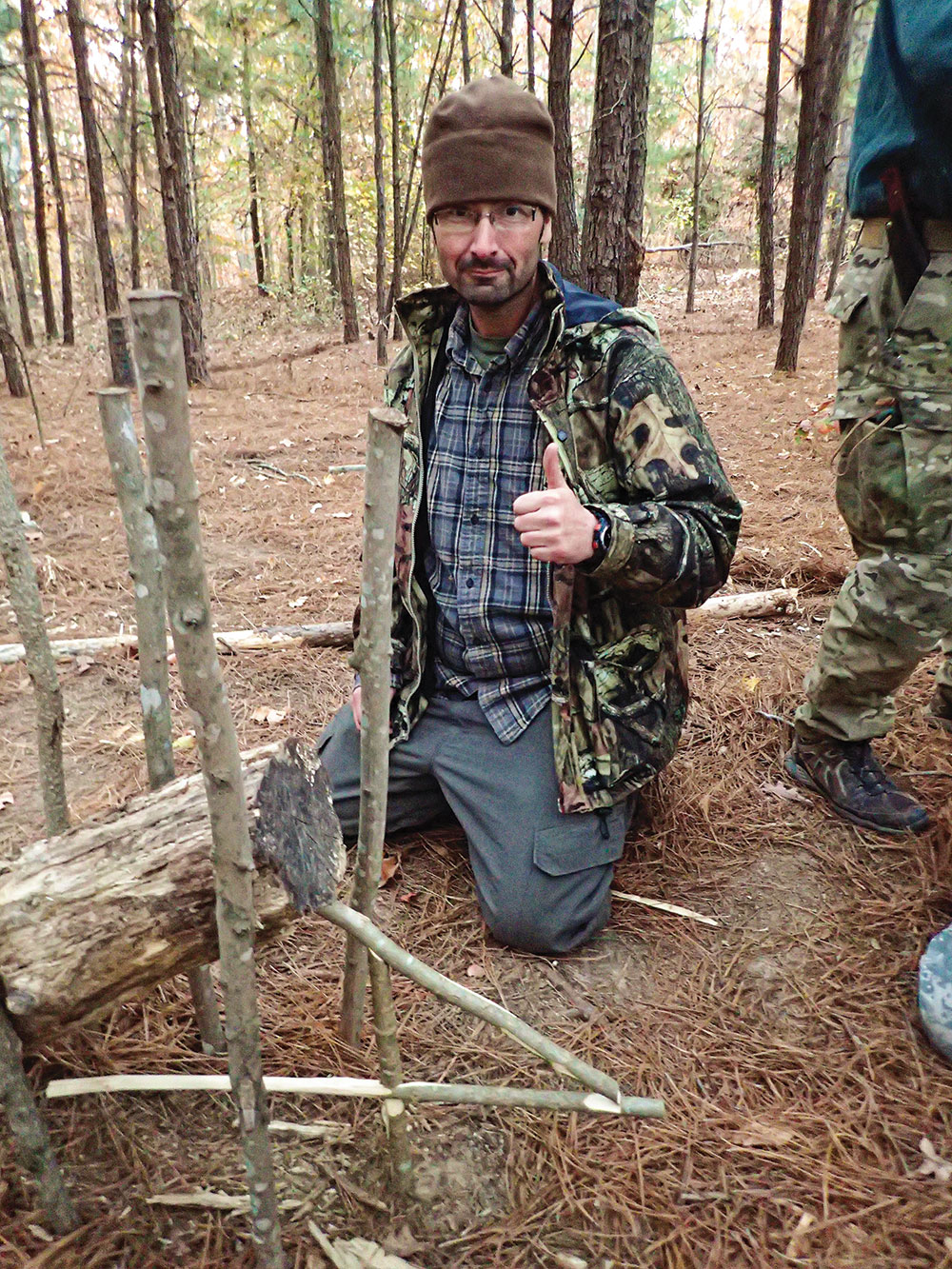
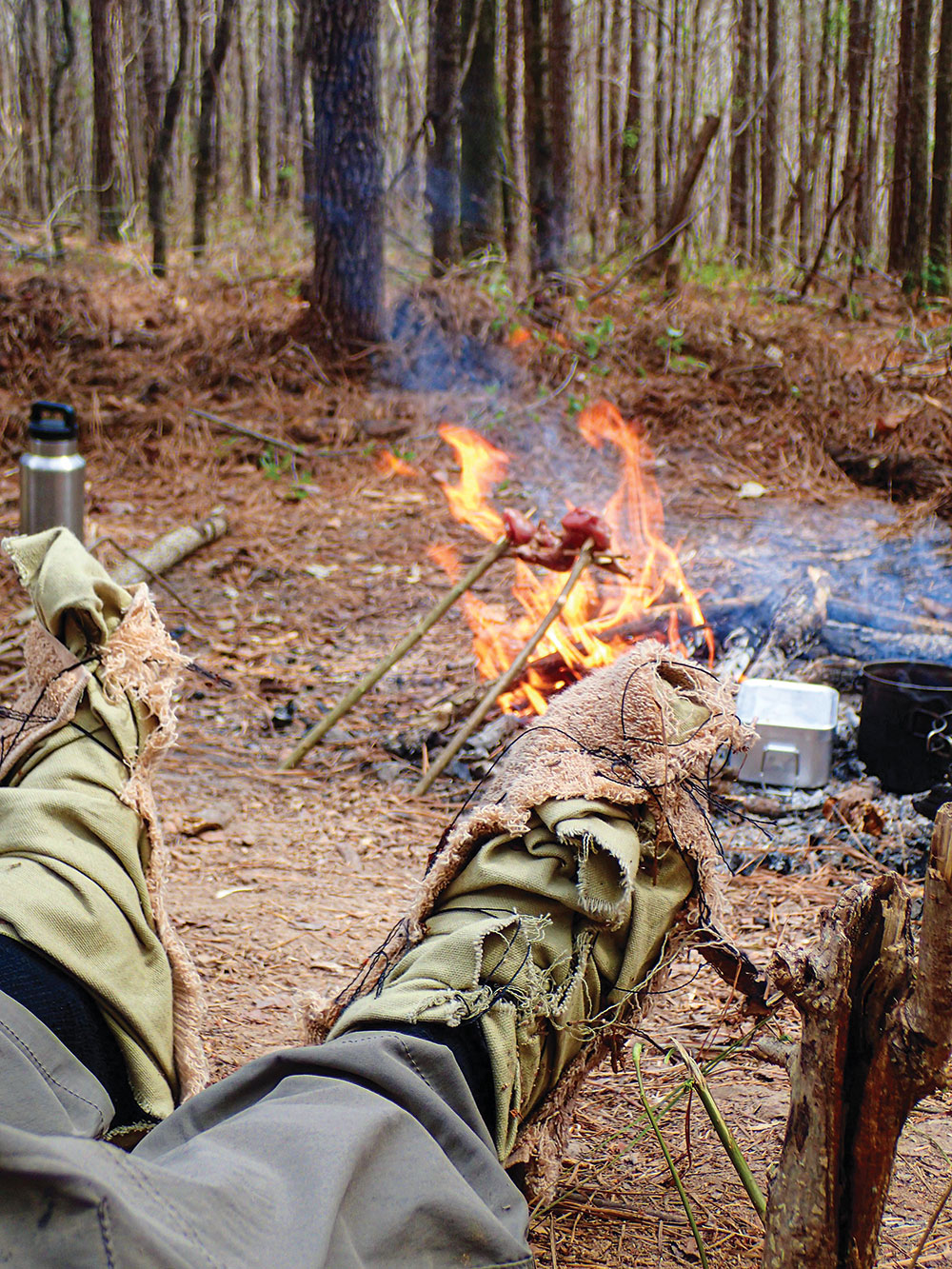
Shelter and fire are usually taught on the first day. The debris shelter and classic lean-to are always taught, with everyone getting hands-on experience with them. Fire is broken up into a few different primitive methods: bow drill, hand drill, fire roll, and flint and steel. Tinders (man-made/natural) are demonstrated, and the students then use their knife skills to carve a bow drill set and try to get a coal started that they can blow into a flame.
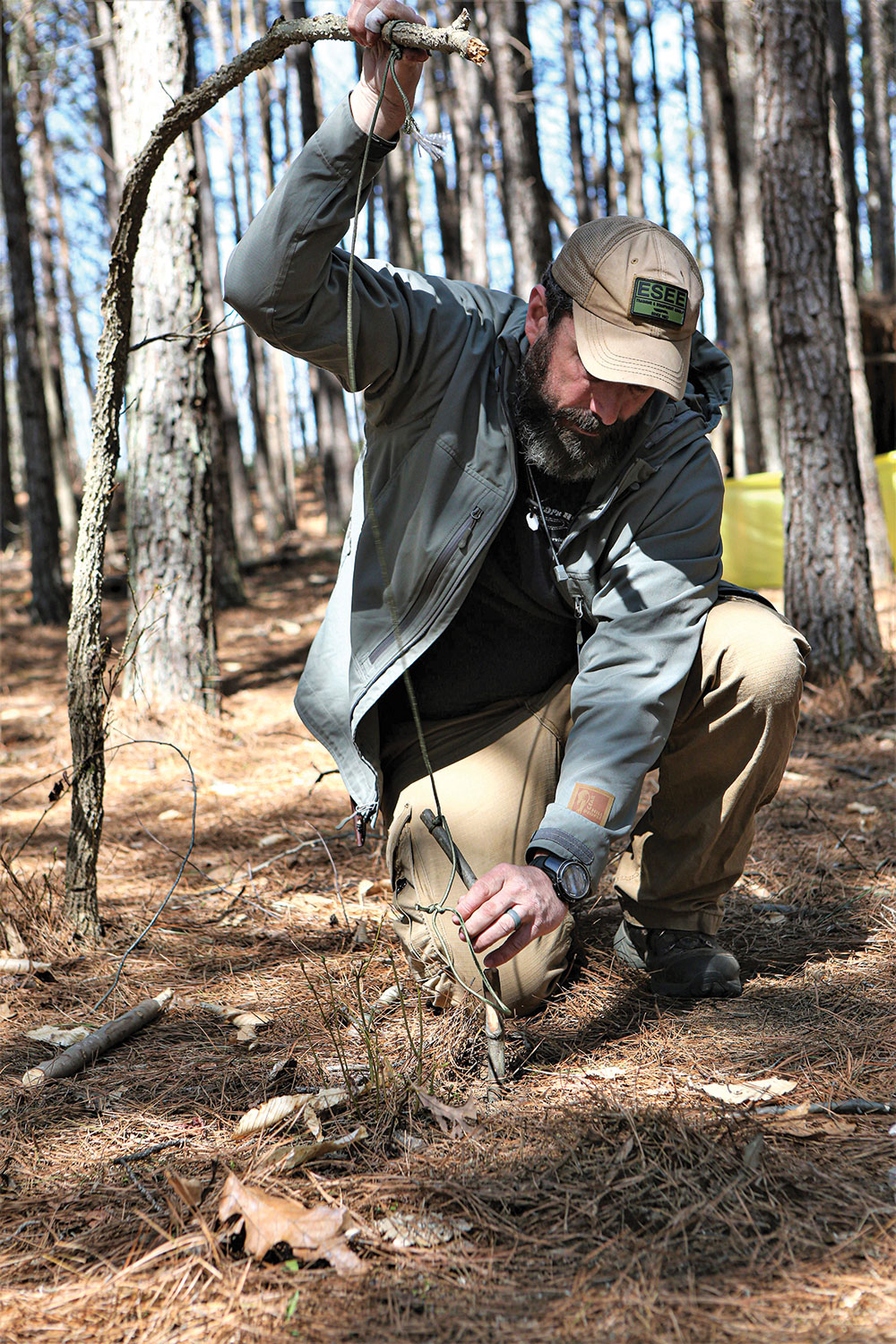
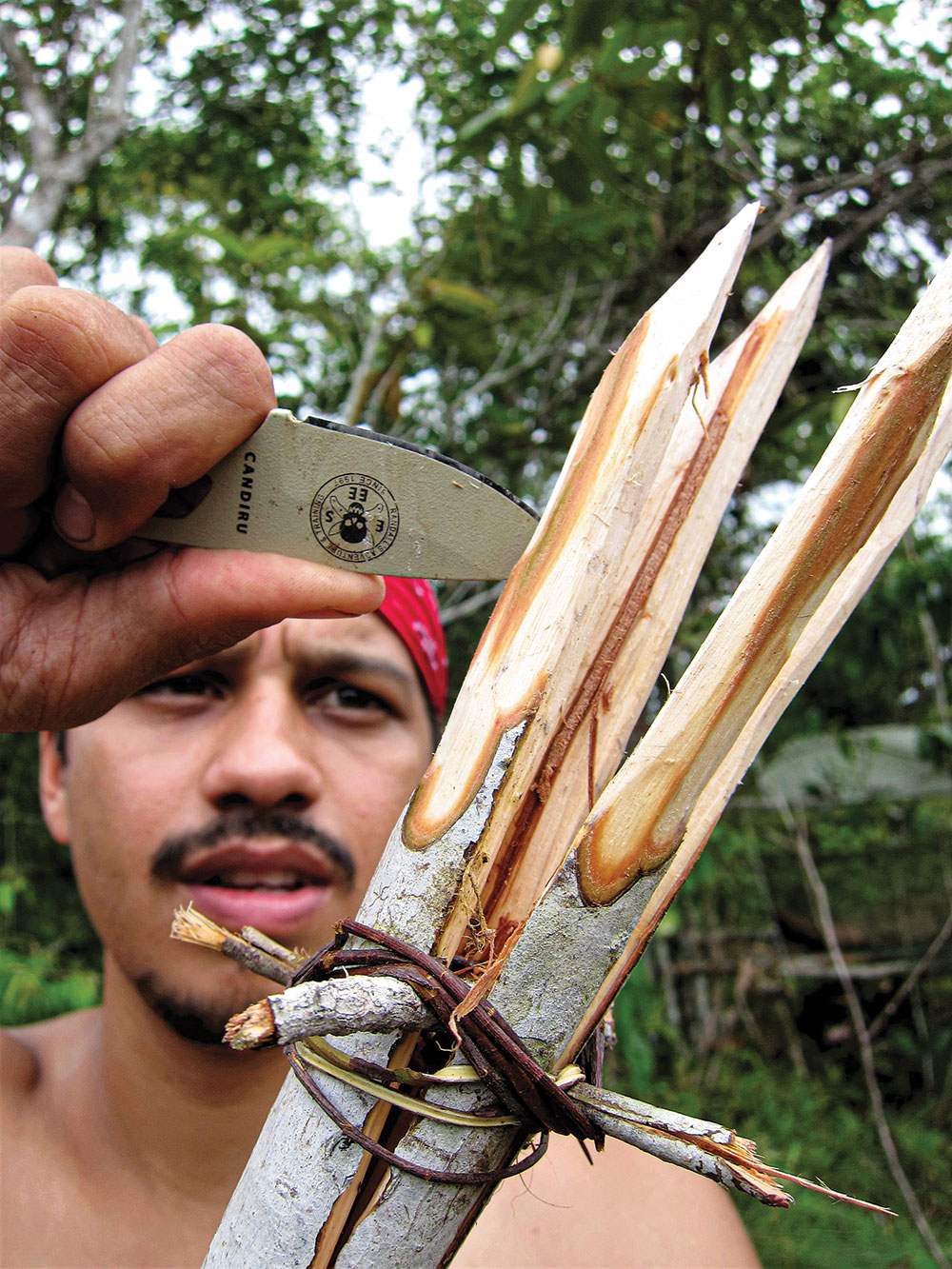
Burn bowls are made by placing a coal in the middle of a piece of poplar wood and blowing air through a rivercane straw to burn the coal into the wood. Bowls and cups have been made this way by our ancestors in all parts of the world.
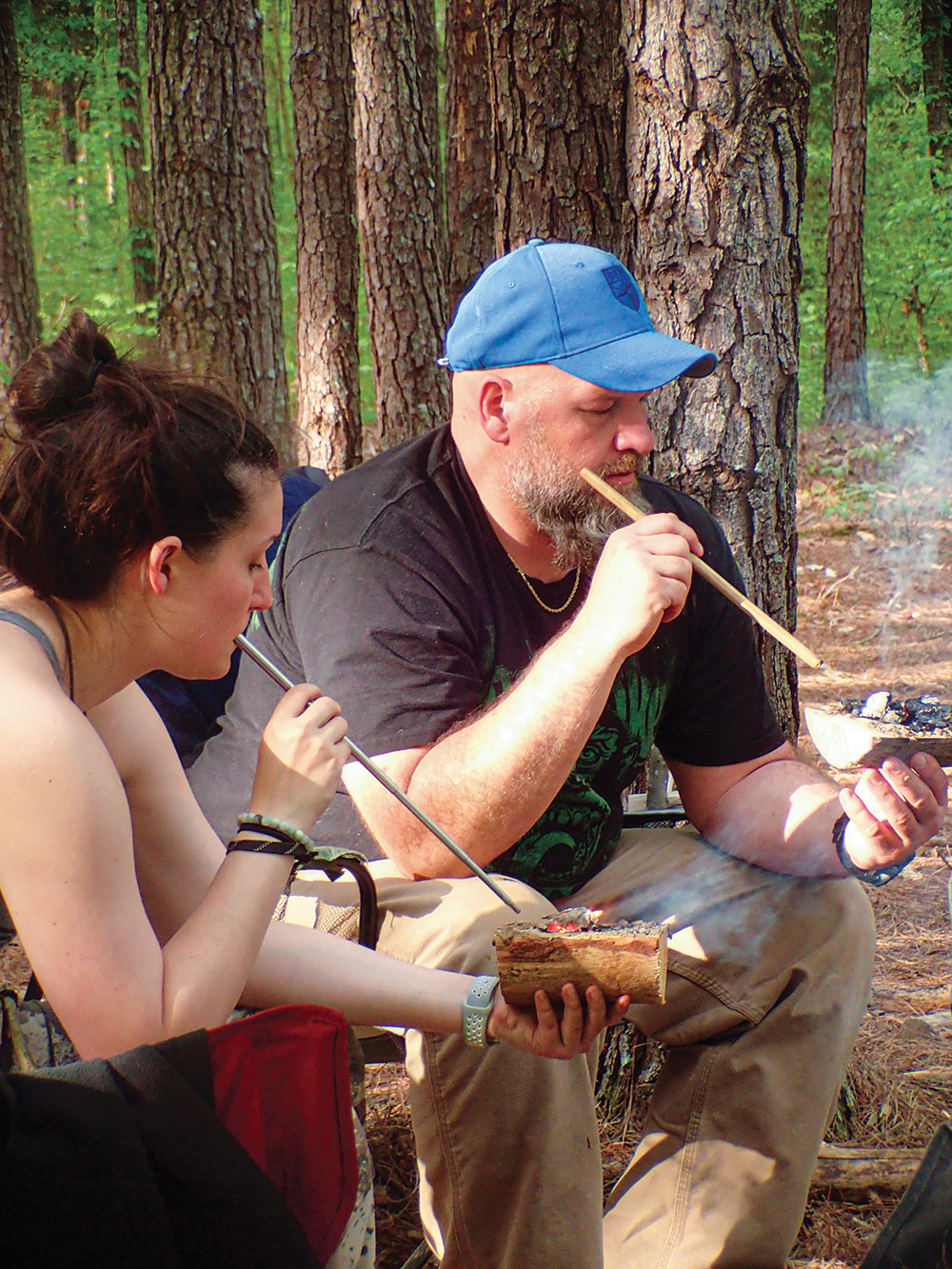
Every student in attendance learn how to create traps and hunting weapons, including figure-four traps, twitch-up traps and wire snares. Pitch glue is made with ashes from the fire, hot water and pine resin to use for attaching arrowheads to a thin length of river cane arrows. After the arrow is secured with artificial sinew, the pitch glue is used to seal it. The arrowheads can be made from flint, bottle tops, scrap tin and whatever Gibson can muster up. The arrows are also fletched with turkey feathers or duct tape to keep them flying straight. The same fletching idea is used at the end of the atlatl spear.
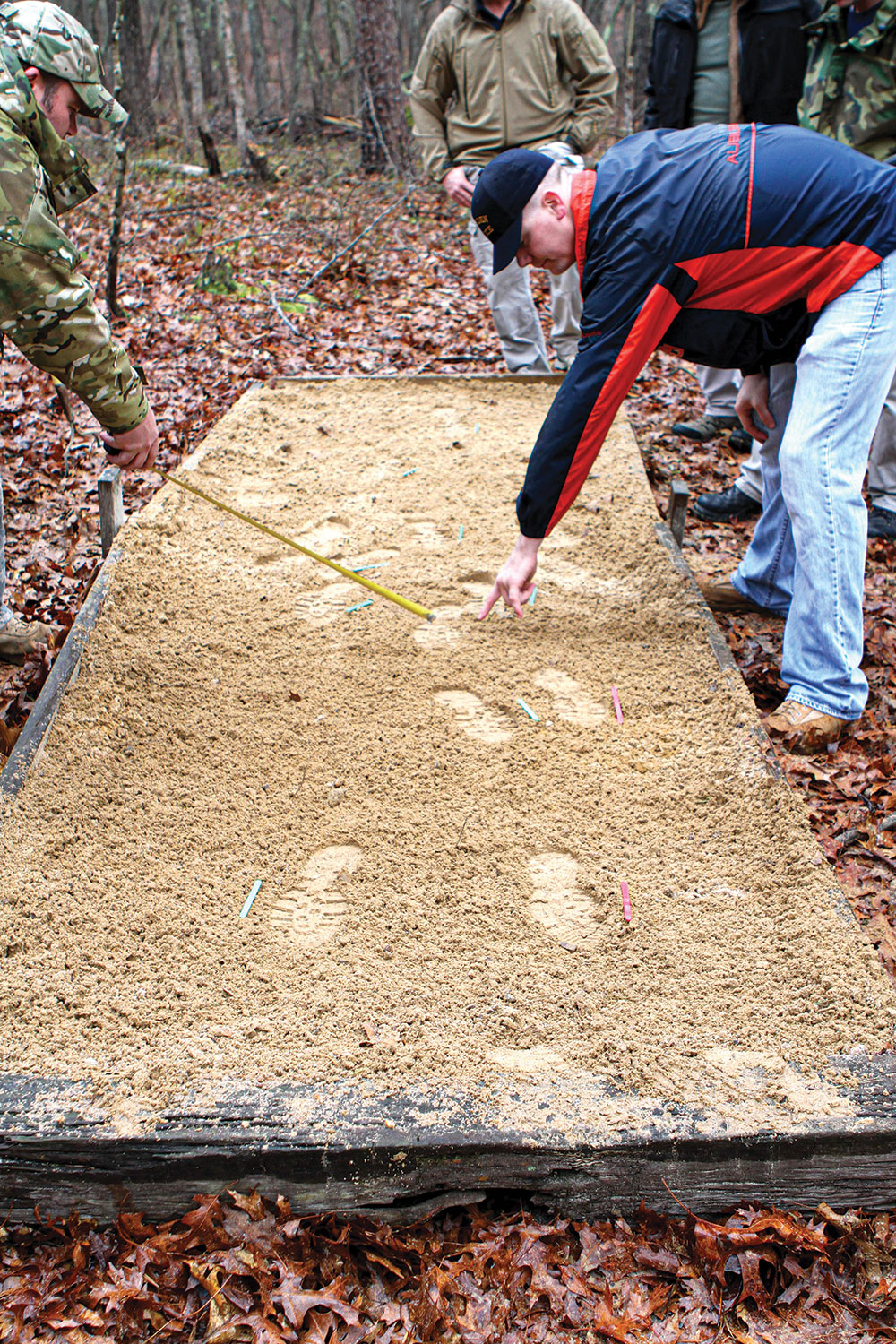
River cane is used for the atlatl spear, which first has to be straightened over the campfire, as do the pieces used for arrows. The handle of the atlatl thrower can be carved from a slightly curved branch, and one fork is used to hold the weapon while throwing. Bamboo gigging spears are also made by carving the end until there are two main sharpened points. Then, teeth are carved into the sides, opposite from each other. Additionally, multipronged spears are made from wood or bamboo and secured with cordage. All these skills required a large number of knife skills that need to be practiced.
PHYSICAL AND MENTAL
Being prepared for a survival experience isn’t just about skills; rather, it’s also about physical and mental challenges.
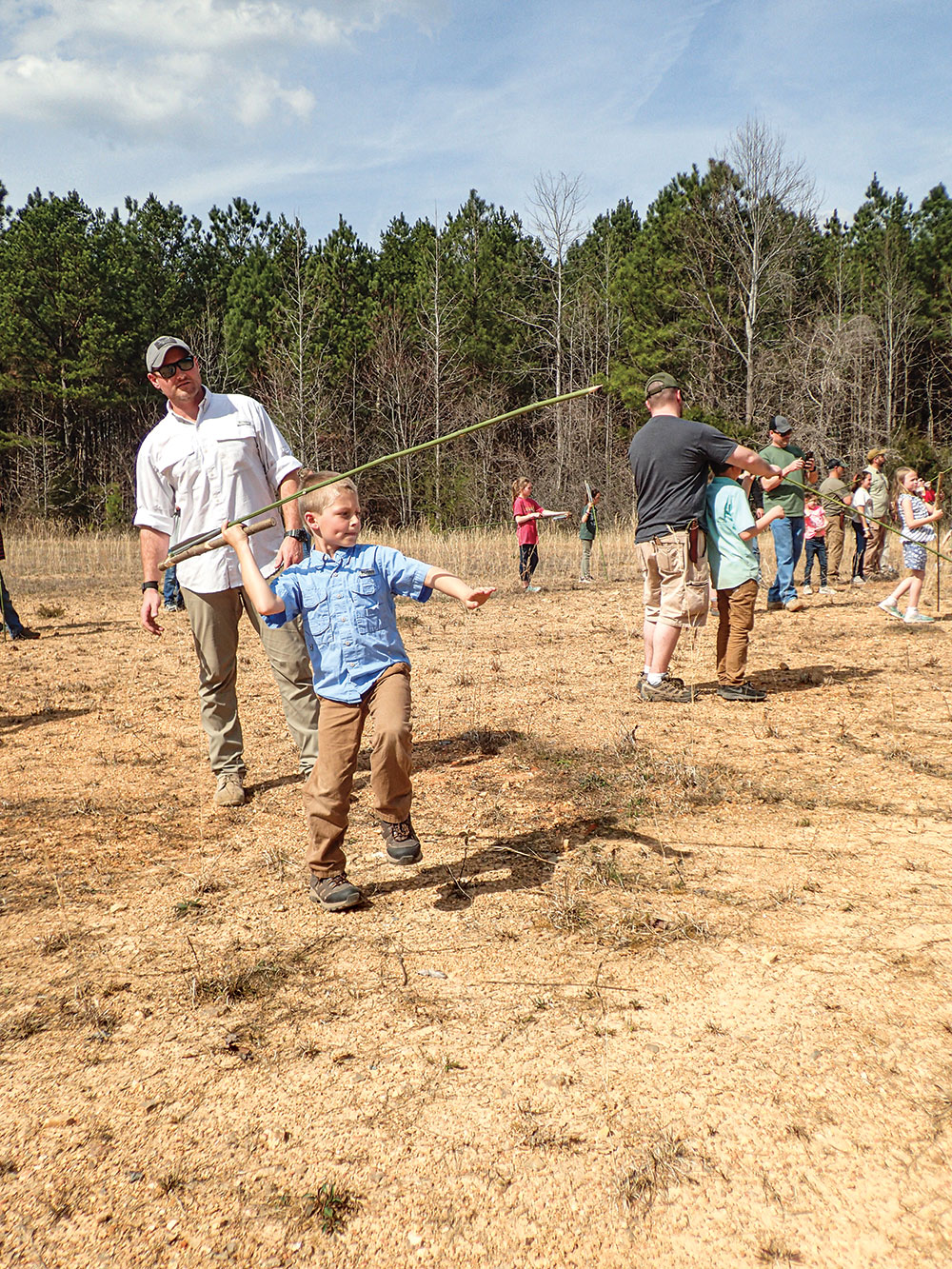
These are best learned from people who’ve had real-world “dirt time” in many different environments. In my opinion, Randall’s Adventure & Training remains on the cutting edge of survival training schools.
LEARN FROM THESE IN-DEPTH RAT COURSES
Randall’s Adventure & Training Classes include—
• Introduction to Survival
• Introduction to Tracking
• Single Rope Technique
• Search & Rescue Tracking
• Advanced Bushcraft
• Defensive Pistol, Level 1
• Field Survival
• Land Navigation
• Parent/Child Survival
• Lightweight Rescue
• Desert Skills
• Wilderness First Responders
PATRICK ROLLINS
Patrick Rollins, lead instructor for Randall’s’ Adventure & Training, could be best described as the “Swiss Army Knife” of instructors.
Born in Georgia, Patrick has been a long-time wilderness enthusiast involved in canoeing, fishing, hunting and wilderness survival skills. What started as a hobby eventually turned into a lifestyle and career.
Honing his skills as he grew up, Rollins caught the eye of RAT as a student when he took a class there in 2009. This led to assisting in classes, both foreign and domestic and with many different government agencies, until taking over as RAT’s lead instructor. Eventually, he was asked to design a knife for ESEE Knives.
Before joining RAT, Rollins was a sheriff’s deputy with Georgia’s Whitfield County Sheriff’s Office. He’s been a law enforcement instructor since 2001 and served on the Whitfield County Sheriff’s Office Special Response Team (Entry and Sniper). He’s certified as a wilderness first responder (WFR) and NASAR SARTECH 1.
You won’t find anyone more qualified (or humbler) than Rollins. Like all great instructors, he remains a student of the wilderness.
RAT SEARCH-AND-RESCUE
Members of the RAT team also participate in a search-and-rescue (SAR) organization named after their training company. RAT-SAR is a nonprofit, specialized search, rescue and training organization based on the lightweight principles of mountain rescue. RAT-SAR’s approach is based on the mountain rescue/alpine principles of self-sufficient mobile teams trained to operate for extended periods in remote wilderness, mountainous, high-angle, subterranean and other austere environments.
While Randall’s Adventure & Training offers training for RAT-SAR, it’s a separate entity from the company and is solely controlled by its executive board. RAT-SAR doesn’t charge for any search-andrescue services performed.
SOURCE
Randall’s Adventure & Training
P.O. Box 99
Gallant, AL 35972
(256) 613-3834
www.RandallsAdventure.com
www.RATSAR.org
Info@RandallsAdventure.com
A version of this article first appeared in the January 2022 issue of American Outdoor Guide Boundless.


